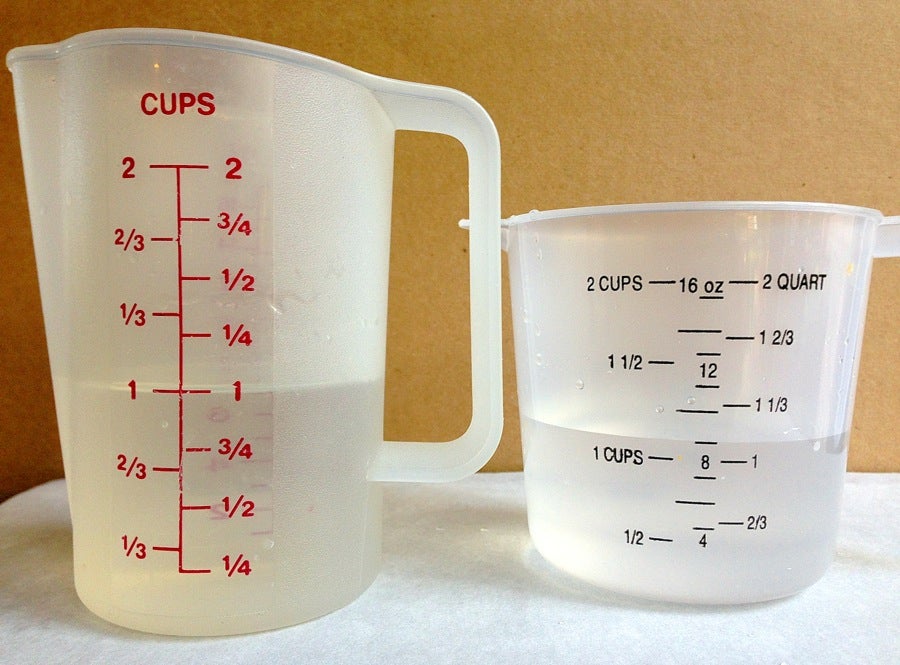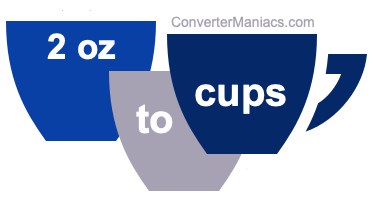


Cups Converter - Convert Oz to Cups WebConvert 2 Fluid Ounces to Cups. Wandering how many dry ounces is in the tablespoon? What about if you measure it in flat spoon or in spoonful spoon? It depends on what you’re measuring. More Calculations 3 ounces to cups 2.1 ounces to cups 2.2 ounces to cups 2.3.

In general, all the two main baking ingredients that are measured in weight. office scheduler 2 Ounces To Pounds Converter 2 oz To lbs Converter. We covered liquid conversion from (fluid) ounces to cups and spoons and metric units in another article here as well, and here you can find conversions for common baking ingredients like different types of flour (white flour, corn flour, whole grain flour) and sugar (white, brown and caster sugar) from ounces to spoonful and flat spoons, teaspoons, and cups. For odd cup amounts, such as 1.1 cups, convert to ounces. In the past, there were even more ounces – Portuguese, Spanish, French, Italian (Roman), Dutch, Chinese, English Tower, Apothecaries and Maria Theresa ounce, some close to each other, but some with the really big weight difference. To be even more confused with everything, During Queen Elizabeth time, the pound (1 lb equals 16 ounces) was redefined as 7,000 troy grains. You don’t need to be worrying anymore that you’ll screw the receipt because your kitchen scale stopped working.Īn ounce is a mass unit, used mostly in USA and UK and stands for both – US customary ounce and British imperial ounce and equals 28.3 grams. Liter to Cup (US) Conversion Table Liter ġ5 L, l = 15 × 4.2267528377 cup (US) = 63.The ultimate cheat sheet for ounces to kitchen units such as cups, spoonful spoons, and teaspoons conversions. WebTo convert 2.3 fluid ounces into cups we have to multiply 2.3 by the conversion factor in order to get the volume amount from fluid ounces to cups. Standardized measuring cups are used instead. Actual drinking cups can vary significantly in terms of size and are generally not a good representation of this unit. customary teaspoons.Ĭurrent use: The cup is typically used in cooking to measure liquids and bulk foods, often within the context of serving sizes. One United States customary cup is equal to 236.5882365 milliliters as well as 1/16 U.S. But even if there is no exact conversion rate converting 2.3 ounces to cups, here you can find the conversions for the most searched for food items. Ounces are a mass unit while cups are a volume unit. Converting 2.3 ounces to cups is not as straightforward as you might think. cups of dark-roasted coffee (One coffee cup contains 10.0 fluid ounces of. Convert 2.3 oz to cups (2.3 ounces to cups). And now you have a fluid ounce, which you could either view as 2 tablespoons or, as we'll see, 1/8 of a cup. You have the ounce that is a measure of weight, which is equal to 1/16 of a pound. Because you also have the ounce as a measure of weight. The metric cup is defined as 250 milliliters. ounces (1 lb 16 oz), and how many ounces of Mn are in this coin 98. And the US customary units, they aren't designed to be super, super clear. Cup (US)ĭefinition: A cup is a unit of volume in the imperial and United States customary systems of measurement. It is also used to measure certain non-liquid volumes such as the size of car trunks, backpacks and climbing packs, computer cases, microwaves, refrigerators, and recycling bins, as well as for expressing fuel volumes and prices in most countries around the world. However, due to the mass-volume relationship of water being based on a number of factors that can be cumbersome to control (temperature, pressure, purity, isotopic uniformity), as well as the discovery that the prototype of the kilogram was slightly too large (making the liter equal to 1.000028 dm 3 rather than 1 dm 3), the definition of the liter was reverted to its previous, and current definition.Ĭurrent use: The liter is used to measure many liquid volumes as well as to label containers containing said liquids. History/origin: There was a point from 1901 to 1964 when a liter was defined as the volume of one kilogram of pure water under the conditions of maximum density at atmospheric pressure. One liter is equal to 1 cubic decimeter (dm 3), 1,000 cubic centimeters (cm 3), or 1/1,000 cubic meters (m 3). Definition: A liter (symbol: L) is a unit of volume that is accepted for use with the International System of Units (SI) but is technically not an SI unit.


 0 kommentar(er)
0 kommentar(er)
